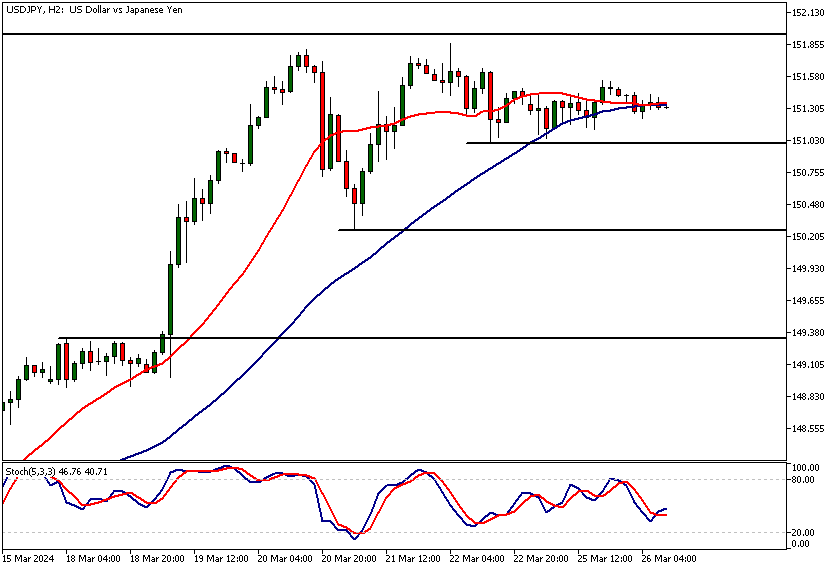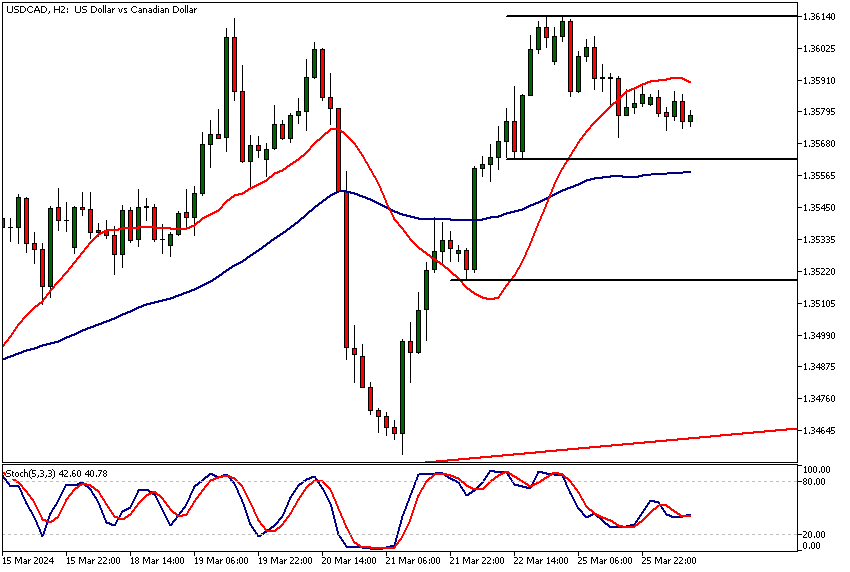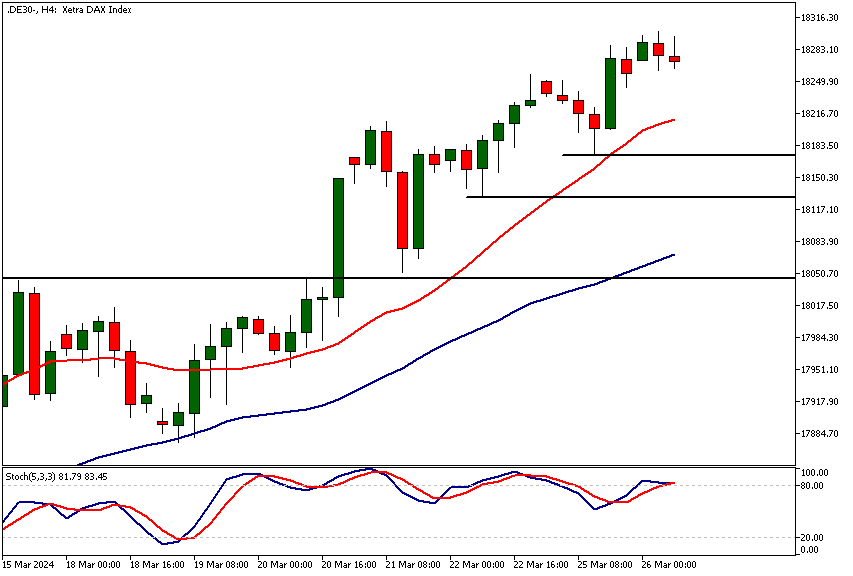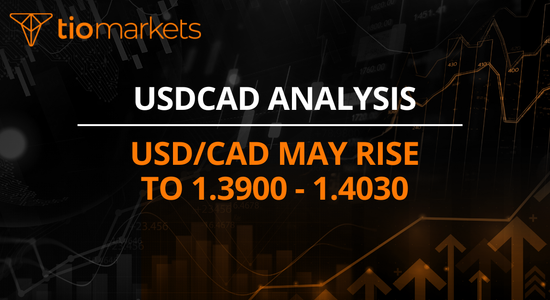3 Markets to Watch This Week
BY Janne Muta
|März 26, 2024USDJPY

The USDJPY is trading sideways between the weekly chart resistance (151.91) and Friday's low (151.00). In the process, the market has created two inside candles in the daily chart suggesting indecision. Range traders can take advantage of this until the market breaks out of the trading range. Should the sideways range be resolved to the upside a measured move target at 153.61 would become relevant. Below the 150.00 support level, we could see the market moving to 150.35 or so, while 148.50 remains as the measured move target on the downside.
Let's take a quick look at the recent developments and the upcoming macroeconomic data releases. A week ago, the Bank of Japan (BoJ) concluded its negative interest rates policy, increasing rates to 0.1%, thus narrowing the interest rate differential between the USD and JPY. This expected move did not strengthen the yen; instead, the USD surged against it, pushing the USDJPY to a resistance level at 151.91. Following this, the Federal Reserve (Fed) maintained its rates, aligning with expectations. However, the dot plot indicated three rate cuts totalling 75 basis points for the year, while also upgrading GDP forecasts and predicting a lower unemployment rate by year-end. These developments spurred a rally in the dollar index, although gains in USDJPY were curbed by the BoJ's rate hike and the 151.91 resistance.
US dollar bulls are proceeding with caution due to potential Japanese intervention in the currency market amid heightened preventive rhetoric from officials. The upcoming Tokyo CPI, expected to show moderation following February's spike and the forthcoming core Personal Consumption Expenditures (PCE) price index update in the US are pivotal. Despite anticipations of a 0.3% rise in February's core PCE, Fed Chair Powell hinted at a possible lower figure. Additionally, with US 10-year bond prices rising, implying lower yields, and a lighter economic calendar in a holiday-shortened week, significant movements in yields might be limited, influencing dollar positions.
USDCAD

The USDCAD is in an uptrend in the weekly and daily charts. The market has not, however, been able to penetrate a resistance area at 1.3620 - 1.3653. While there has not been enough willpower among the dollar bulls to push through this area, buyers have created a higher swing low at 1.3456. This suggests institutional support for USDCAD near the 1.3450 level. Yesterday's inside candle (daily chart) indicates there has been some profit-taking which increases the risk of the market breaking the nearest key support level (1.3564) at the 2h chart. If the level breaks, look for a move to 1.3520. Alternatively, if the market rallies decisively above the 1.3619 a move to 1.3650 or so could be likely.
Early indications suggest Canada's economy is on the mend in 2024, with expectations of a 2% GDP growth on a seasonally adjusted annual rate basis. This positive outlook is partly driven by an upturn in oil prices, a result of narrower discounts to Western Texas Intermediate and anticipated gains from the Trans Mountain pipeline expansion. Nonetheless, hurdles remain, especially concerning productivity and labour expenses. The Bank of Canada has issued a strong plea for enhancements in these areas. Canada's struggle with productivity stems from inadequate investment, a lag in adopting new technologies, and a tendency towards lower efficiency in smaller enterprises.
Economic stimulation is also expected from fiscal policies, with both provincial and federal budgets poised to support expansion. However, such fiscal growth, combined with ambitious immigration goals, might fuel inflation, presenting a challenge for the Bank of Canada's monetary policy decisions.
In light of these factors, the Bank of Canada is predicted to exercise caution in its monetary easing strategies. While the economic outlook is bolstered by factors like higher oil prices and government spending, productivity and potential inflation pose significant concerns. Thus, the Bank's policy decisions are likely to aim at striking a balance between encouraging growth and controlling inflation, indicating a cautious stance on adjusting interest rates or employing other monetary instruments.
DAX

DAX has been trending strongly higher for the last five weeks. The market is in a clear uptrend in the weekly, and daily charts and in the major intraday time frames too. As the market is trending higher in the ATH levels, there are no resistance levels to focus on. Instead, we will map the nearest key support levels in the 4h chart. The nearest 4h support levels are at 18,130 and 18,175. If these do not attract buying then the next level to focus is at 18,044. An alternative scenario to the ongoing bull run would be a decisive break below the 17,645 level. This could mean the weekly uptrend losing steam and the market possibly reversing.
The President of the European Central Bank (ECB) Christine Lagarde has indicated a possible reduction in interest rates as early as June, contingent on the analysis of forthcoming economic projections. These projections are keenly awaited for their assessment of inflation trends against the backdrop of the bank's March forecasts, with spring wage negotiation outcomes playing a pivotal role in this assessment. The anticipation around these negotiations and their impact on inflation direction underscores the importance of upcoming data in shaping the ECB's decision-making process.
Persistent domestic price pressures, especially within the services sector, continue to pose a challenge, threatening to keep inflation levels elevated throughout the year. However, Lagarde remains optimistic about the inflation trajectory, buoyed by the ECB's macroeconomic projections which foresee a gradual easing of inflation rates over the coming years. Despite maintaining high interest rates since September, the market is rife with speculation about the timing and scope of the anticipated rate cuts.
The ECB's cautious stance in its March meeting—keeping interest rates at historically high levels—reflects the balancing act between recession fears and persistent inflationary pressures. With the main refinancing operations rate at a 22-year high and inflation projections adjusted to show a slight easing over the next few years, the central bank signals a carefully calibrated approach to monetary policy.
Furthermore, recent data shows a decrease in the annual core inflation rate in the Euro Area, marking a continuous decline over several months. Despite this, the overall consumer price inflation rate remains above the ECB's target, with varied trends across different sectors such as energy, food, alcohol & tobacco, and non-energy industrial goods. The steady rate of services inflation further complicates the inflation landscape.
The economic outlook, as depicted by the ECB's projections, anticipates subdued activity in the near term with a gradual recovery expected in subsequent years. This nuanced picture of the Eurozone's economic trends, inflation dynamics, and the ECB's policy considerations highlights the complex interplay of factors influencing the region's financial stability and growth prospects.
How will you trade the markets this week?

Risk disclaimer: CFDs are complex instruments and come with a high risk of losing money rapidly due to leverage. You should consider whether you understand how CFDs work and whether you can afford to take the high risk of losing your money. Never deposit more than you are prepared to lose. Professional client’s losses can exceed their deposit. Please see our risk warning policy and seek independent professional advice if you do not fully understand. This information is not directed or intended for distribution to or use by residents of certain countries/jurisdictions including, but not limited to, USA & OFAC. The Company holds the right to alter the aforementioned list of countries at its own discretion.
TIOmarkets offers an exclusively execution-only service. The views expressed are for information purposes only. None of the content provided constitutes any form of investment advice. The comments are made available purely for educational and marketing purposes and do NOT constitute advice or investment recommendation (and should not be considered as such) and do not in any way constitute an invitation to acquire any financial instrument or product. TIOmarkets and its affiliates and consultants are not liable for any damages that may be caused by individual comments or statements by TIOmarkets analysis and assumes no liability with respect to the completeness and correctness of the content presented. The investor is solely responsible for the risk of his/her investment decisions. The analyses and comments presented do not include any consideration of your personal investment objectives, financial circumstances, or needs. The content has not been prepared in accordance with any legal requirements for financial analysis and must, therefore, be viewed by the reader as marketing information. TIOmarkets prohibits duplication or publication without explicit approval.

Janne Muta holds an M.Sc in finance and has over 20 years experience in analysing and trading the financial markets.
Related Posts
Trade responsibly: CFDs are complex instruments and come with a high risk of losing all your invested capital due to leverage.



